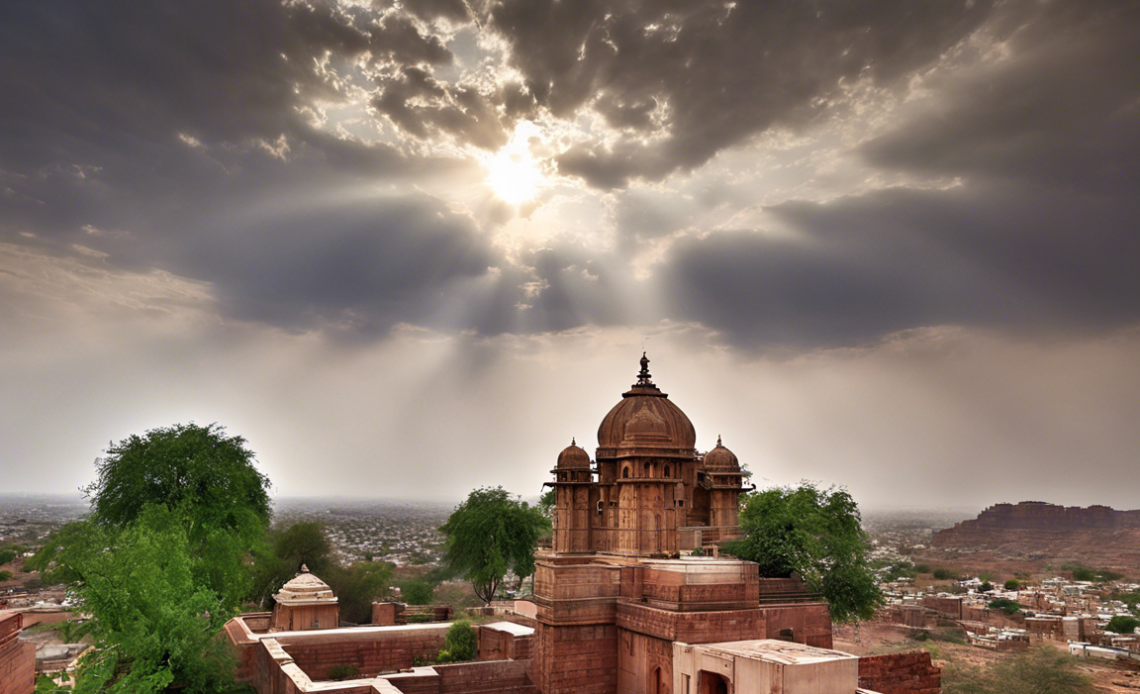
Introduction
Jodhpur, also known as the “Blue City” in Rajasthan, India, is a popular tourist destination known for its vibrant culture, rich history, and majestic architecture. From iconic forts to bustling markets, there is no shortage of things to see and do in this historic city. In this comprehensive guide, we will explore the weather in Jodhpur, highlight its top attractions, and provide useful tips for travelers looking to make the most of their visit.
Weather in Jodhpur
Jodhpur experiences a hot desert climate, with scorching summers and mild winters. The summer months, from April to June, can see temperatures soaring well above 40 degrees Celsius (104 degrees Fahrenheit). It’s essential to stay hydrated and seek shade during this time.
The monsoon season in Jodhpur lasts from July to September, bringing some relief from the heat but also humidity and occasional heavy rainfall. The best time to visit Jodhpur is during the winter months of October to March, when the weather is pleasant, and outdoor activities are more enjoyable.
Top Attractions in Jodhpur
-
Mehrangarh Fort: One of the largest forts in India, Mehrangarh Fort offers stunning views of the city and houses a museum with an impressive collection of royal artifacts.
-
Jaswant Thada: This white marble memorial built in the 19th century is a peaceful spot to escape the hustle and bustle of the city.
-
Umaid Bhawan Palace: Part luxury hotel and part museum, this magnificent palace is still home to the royal family of Jodhpur.
-
Ghanta Ghar (Clock Tower): Located in the heart of the old city, the Clock Tower is a bustling market where you can shop for textiles, spices, and handicrafts.
-
Mandore Gardens: Just a short drive from the city center, these gardens are home to cenotaphs, temples, and lush greenery, making it a perfect spot for a leisurely stroll.
Travel Tips for Jodhpur
- Dress modestly: Jodhpur is a conservative city, so it’s best to dress modestly to respect local customs and traditions.
- Stay hydrated: The desert climate can be unforgiving, so make sure to drink plenty of water, especially during the summer months.
- Try local cuisine: Don’t miss out on the opportunity to sample traditional Rajasthani dishes like dal bati churma and gatte ki sabzi.
- Haggle at the markets: When shopping at local markets like Sardar Market near the Clock Tower, bargaining is expected, so don’t be afraid to negotiate prices.
- Respect cultural sites: When visiting temples and forts, be mindful of local customs and dress codes to show respect for the religious significance of these sites.
FAQs about Jodhpur
-
What is the best time of year to visit Jodhpur?
The best time to visit Jodhpur is during the winter months, from October to March, when the weather is pleasant for sightseeing. -
How many days do I need to explore Jodhpur?
You can explore the main attractions of Jodhpur in 2-3 days, but staying longer allows for a more leisurely visit. -
Is it safe to travel to Jodhpur as a solo female traveler?
Jodhpur is generally safe for solo female travelers, but it’s important to take usual precautions like avoiding isolated areas at night. -
What is the local currency accepted in Jodhpur?
The official currency of India, the Indian Rupee (INR), is accepted in Jodhpur. -
Can I visit Jodhpur during the summer months?
While it can be extremely hot during the summer months in Jodhpur, if you can tolerate the heat, you can still visit and explore the city. Just be prepared with plenty of water and sun protection.
Conclusion
Jodhpur is a city that captivates visitors with its history, culture, and architectural wonders. By considering the weather, exploring the top attractions, and following these travel tips, you can make the most of your visit to this enchanting destination in Rajasthan. Whether you’re marveling at the grandeur of Mehrangarh Fort or wandering through the bustling markets, Jodhpur is sure to leave you with unforgettable memories of India’s vibrant heritage.

